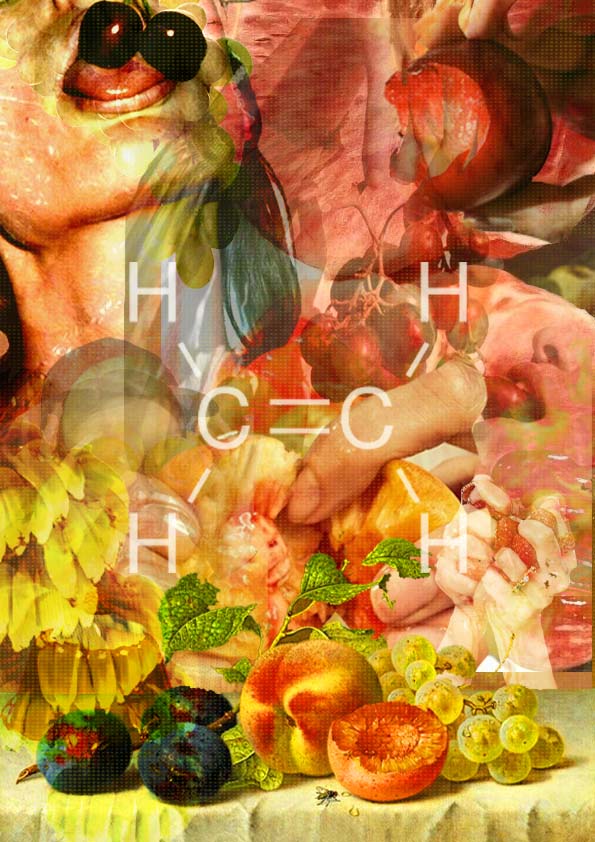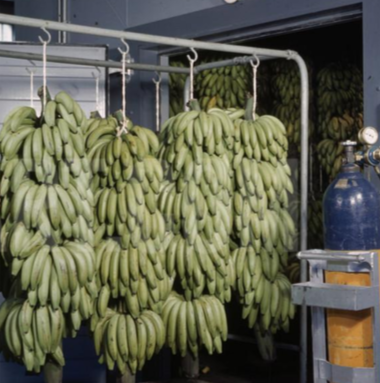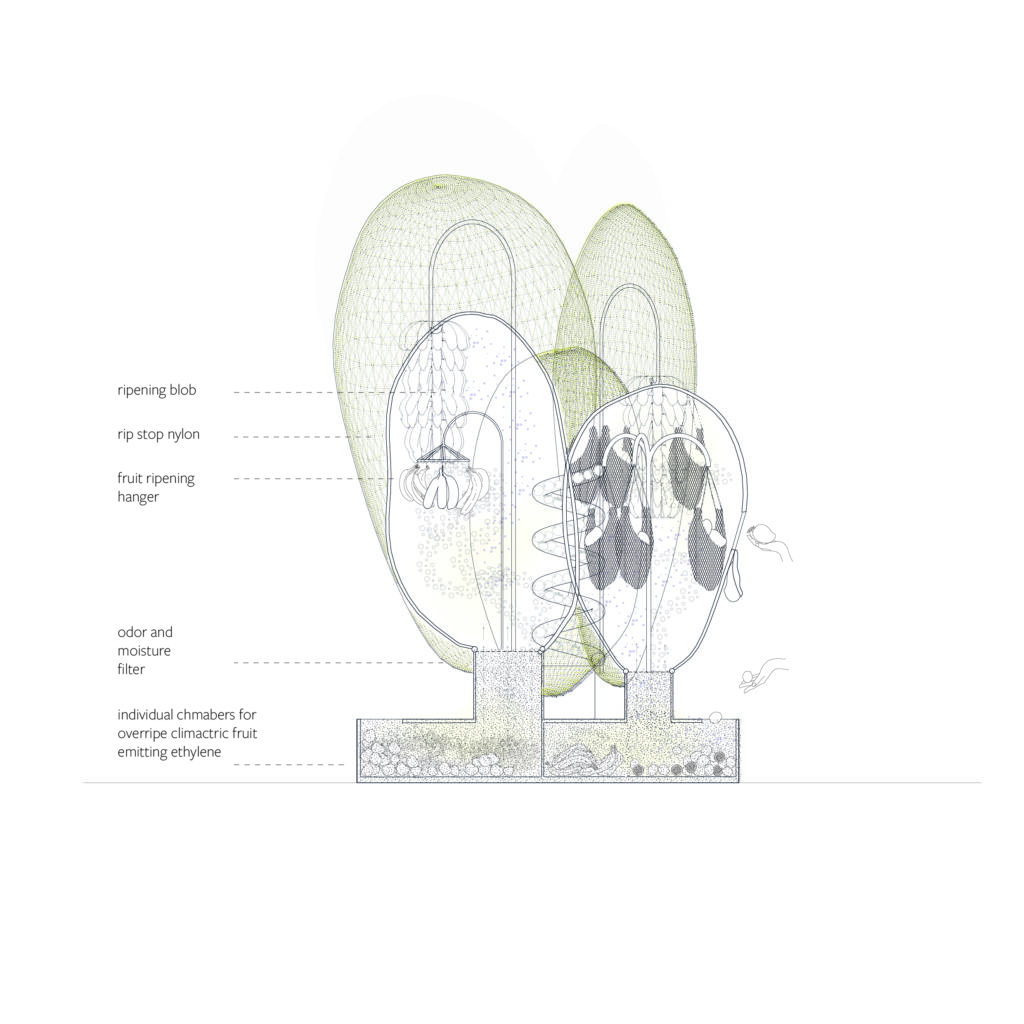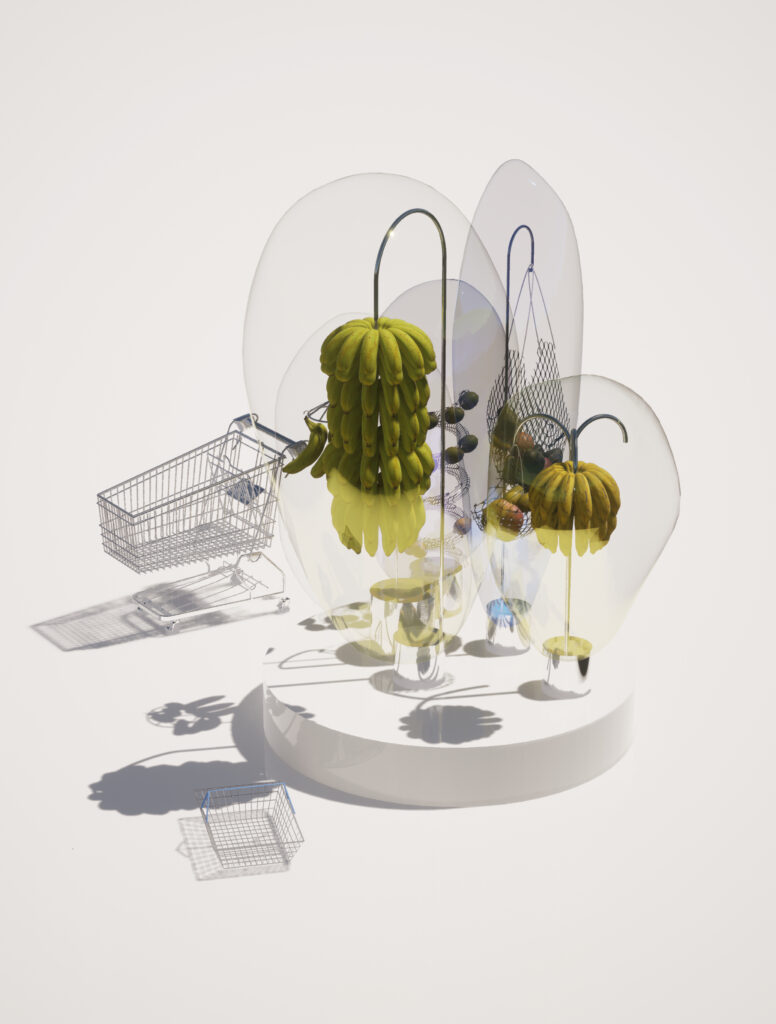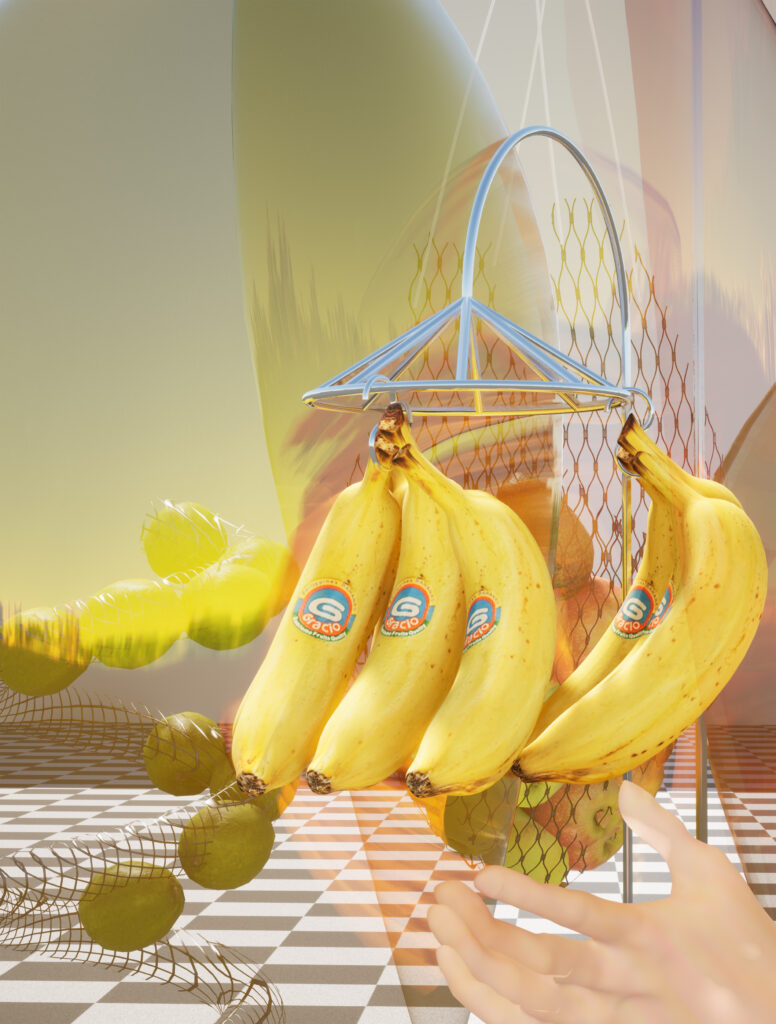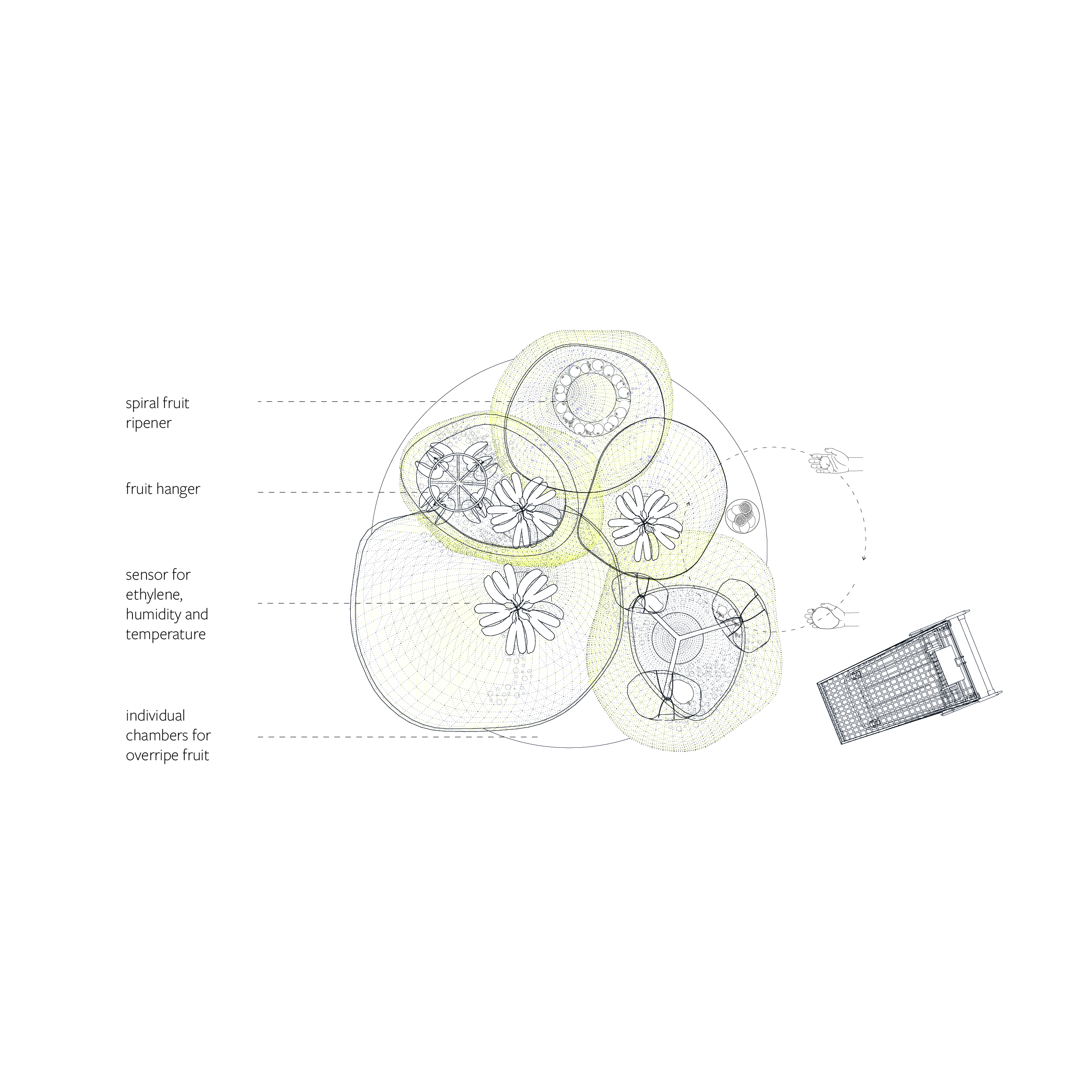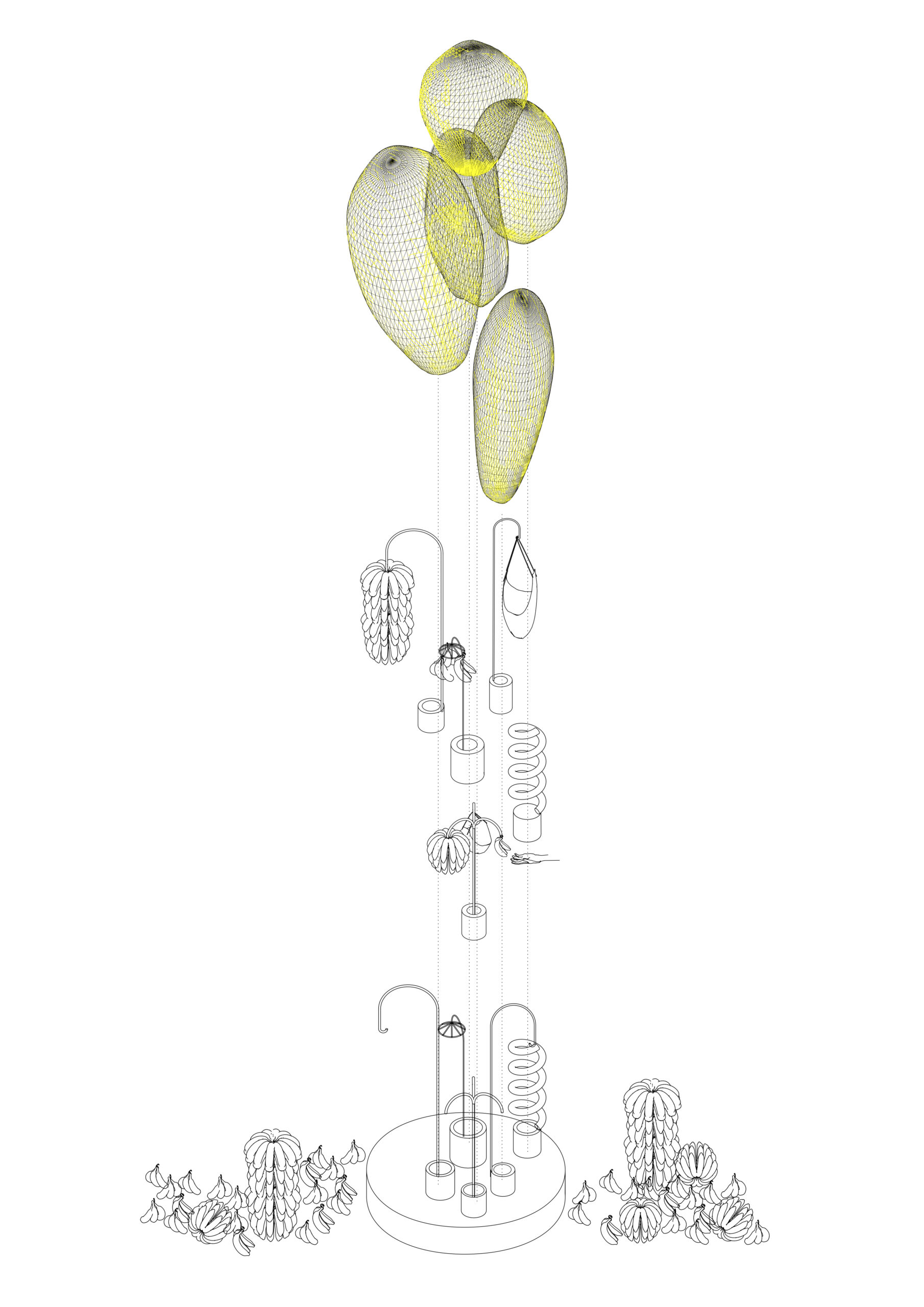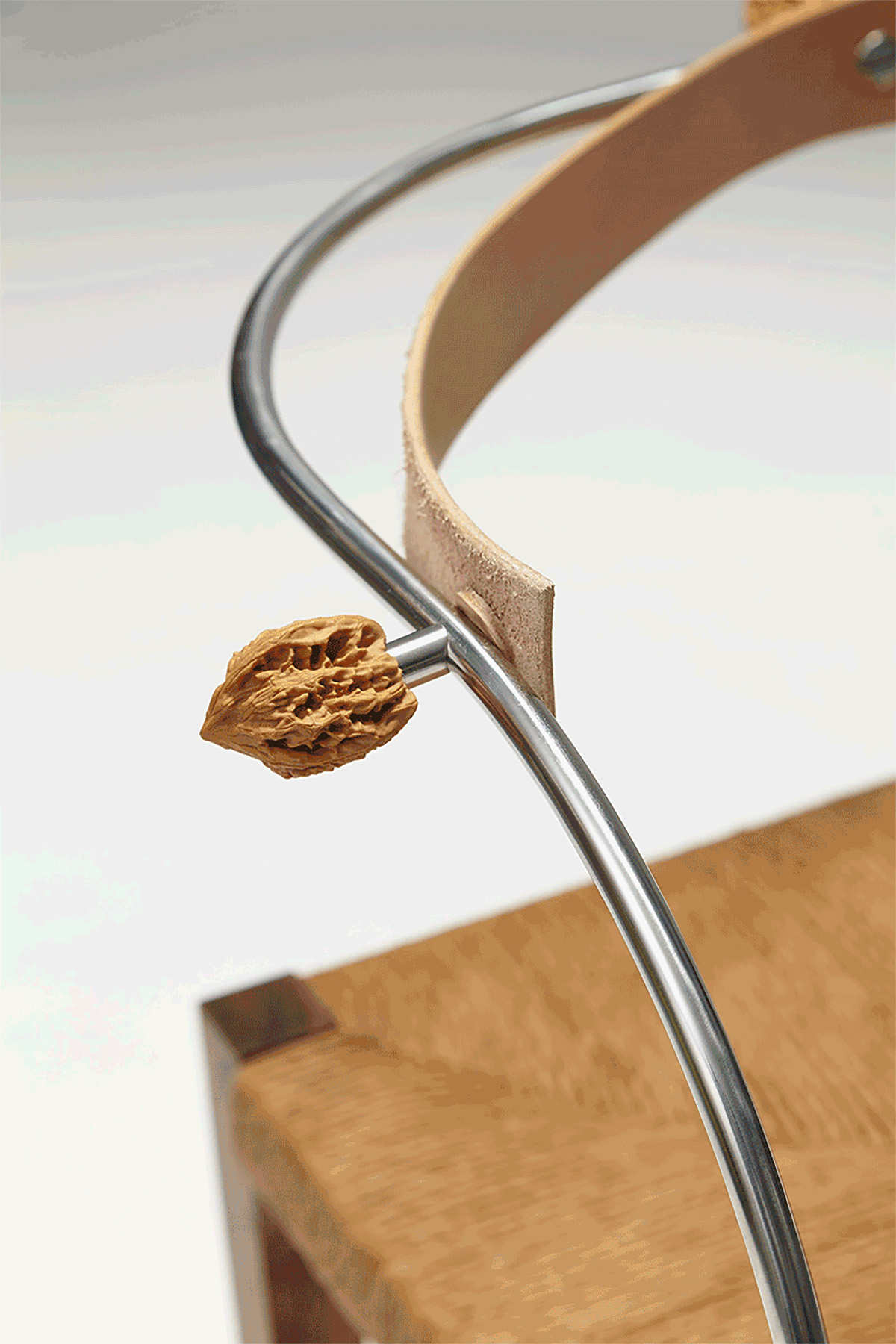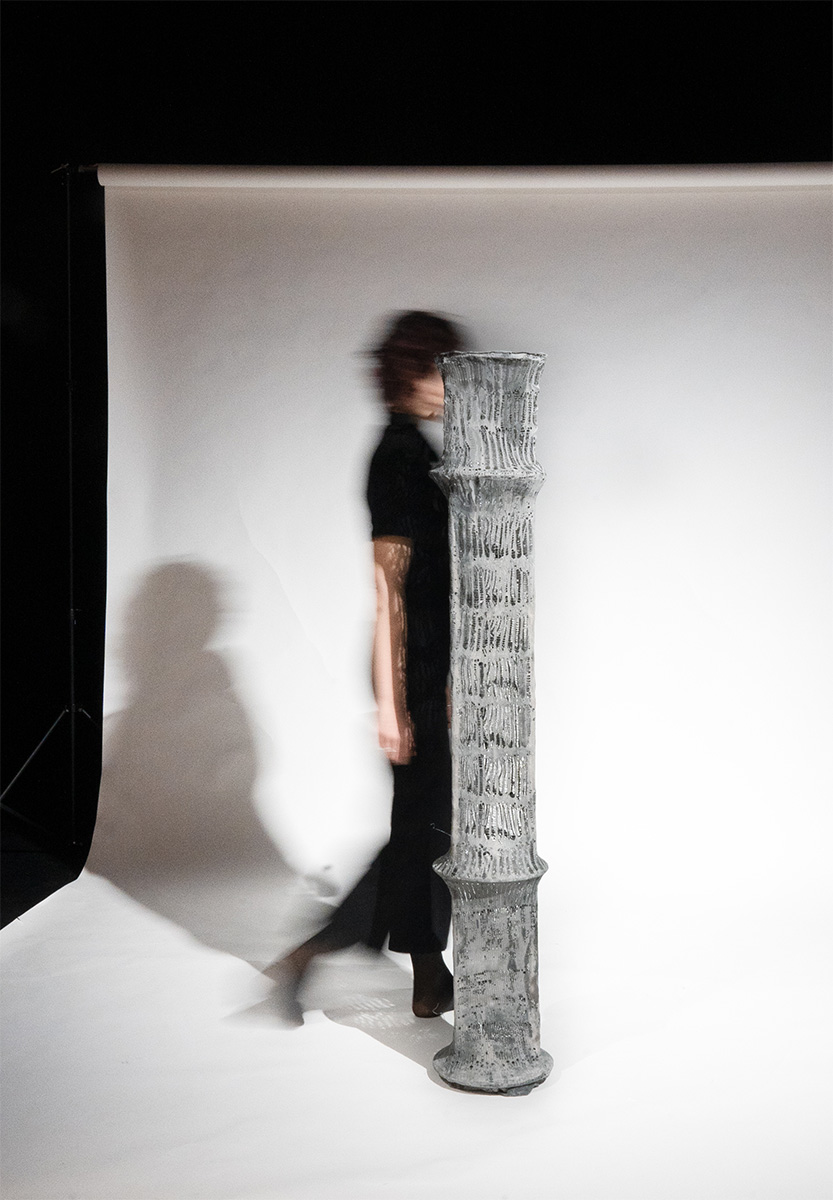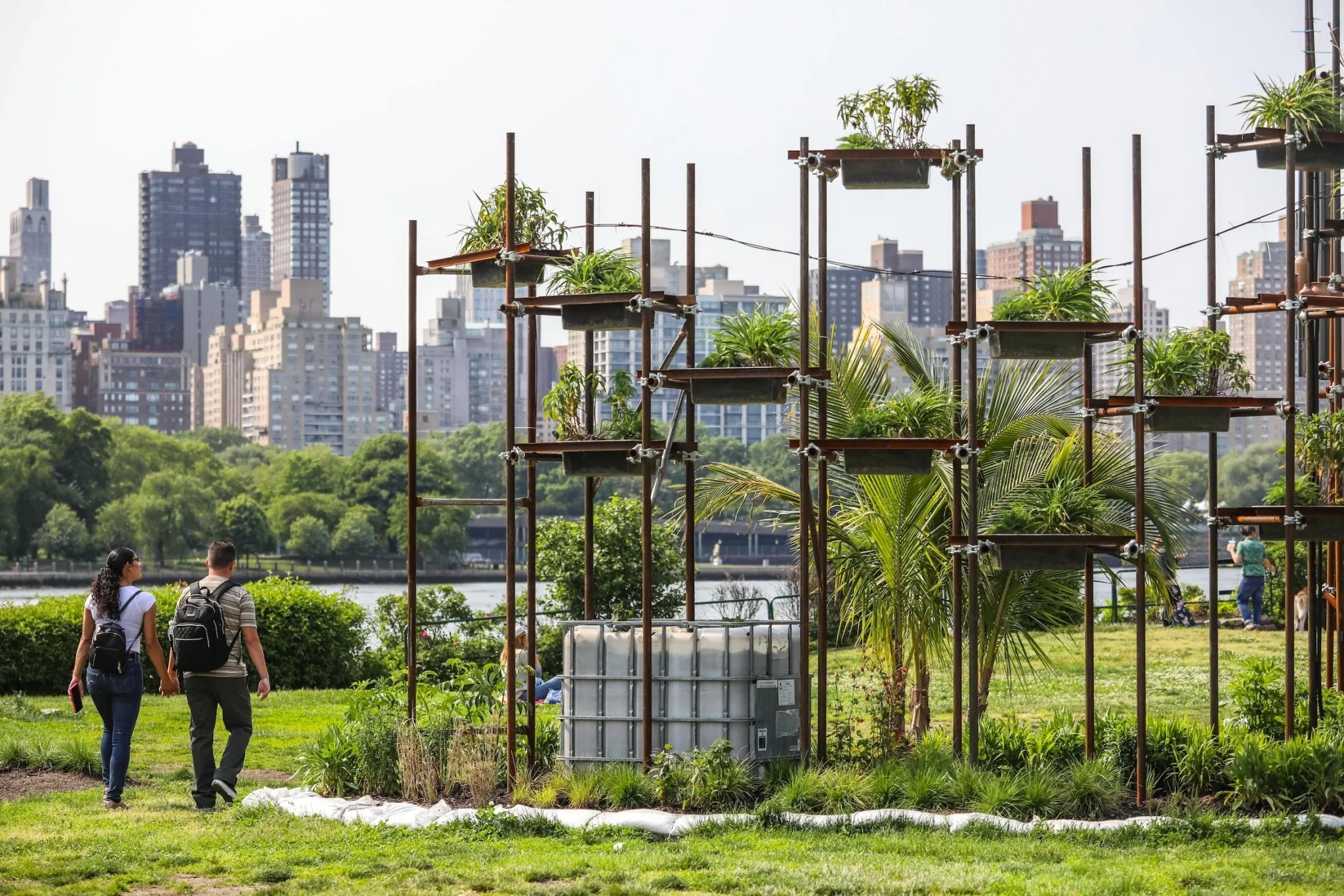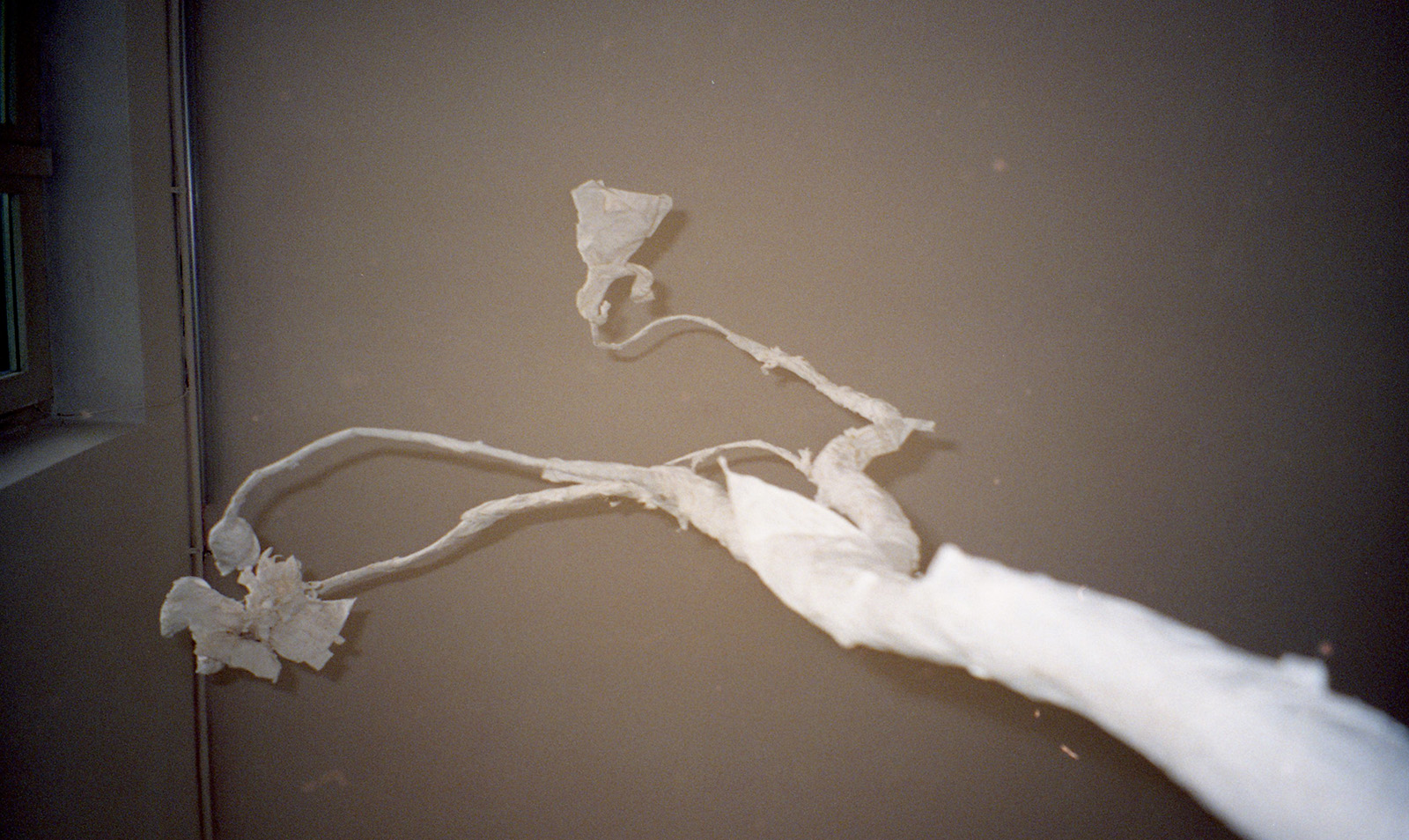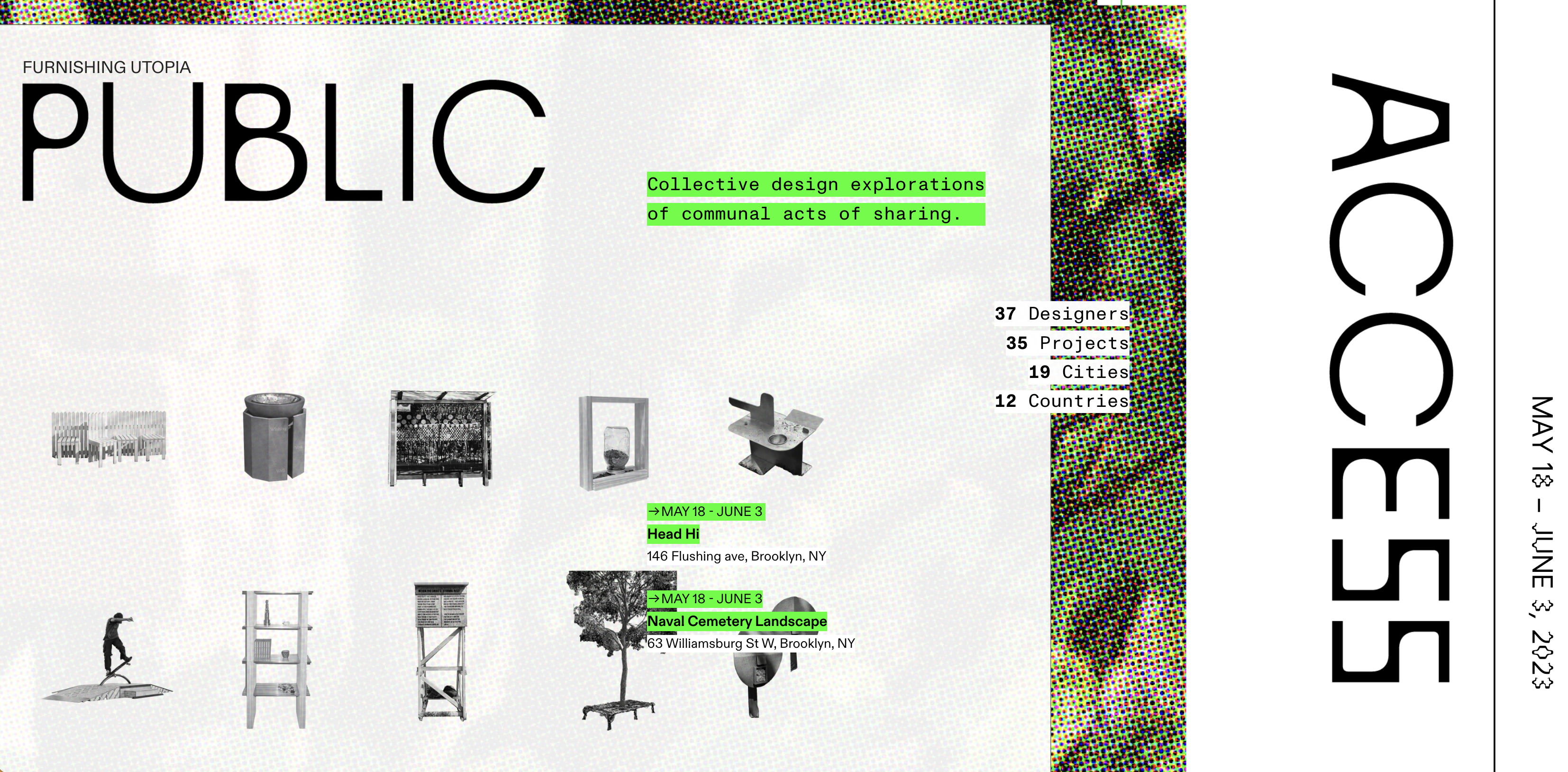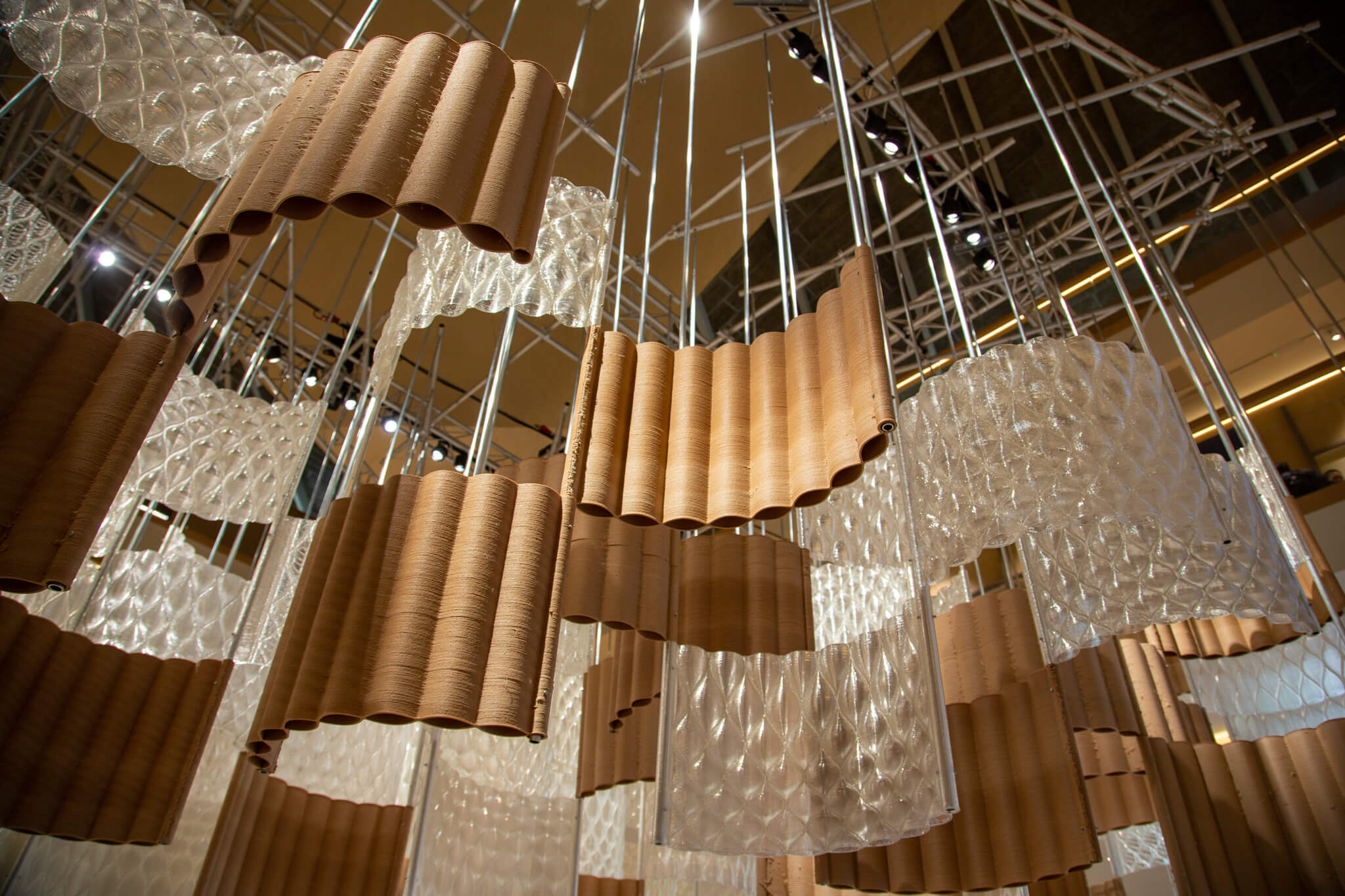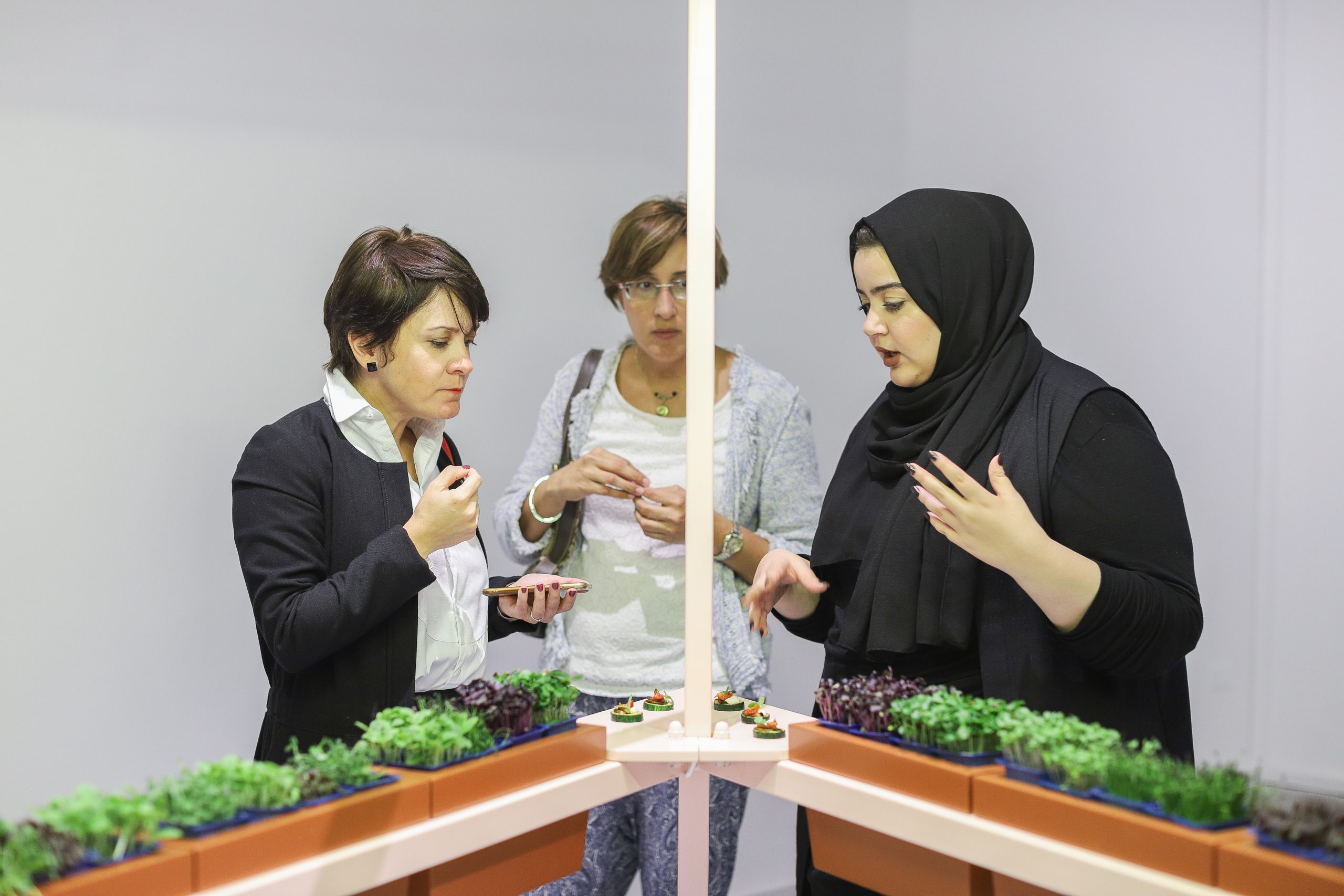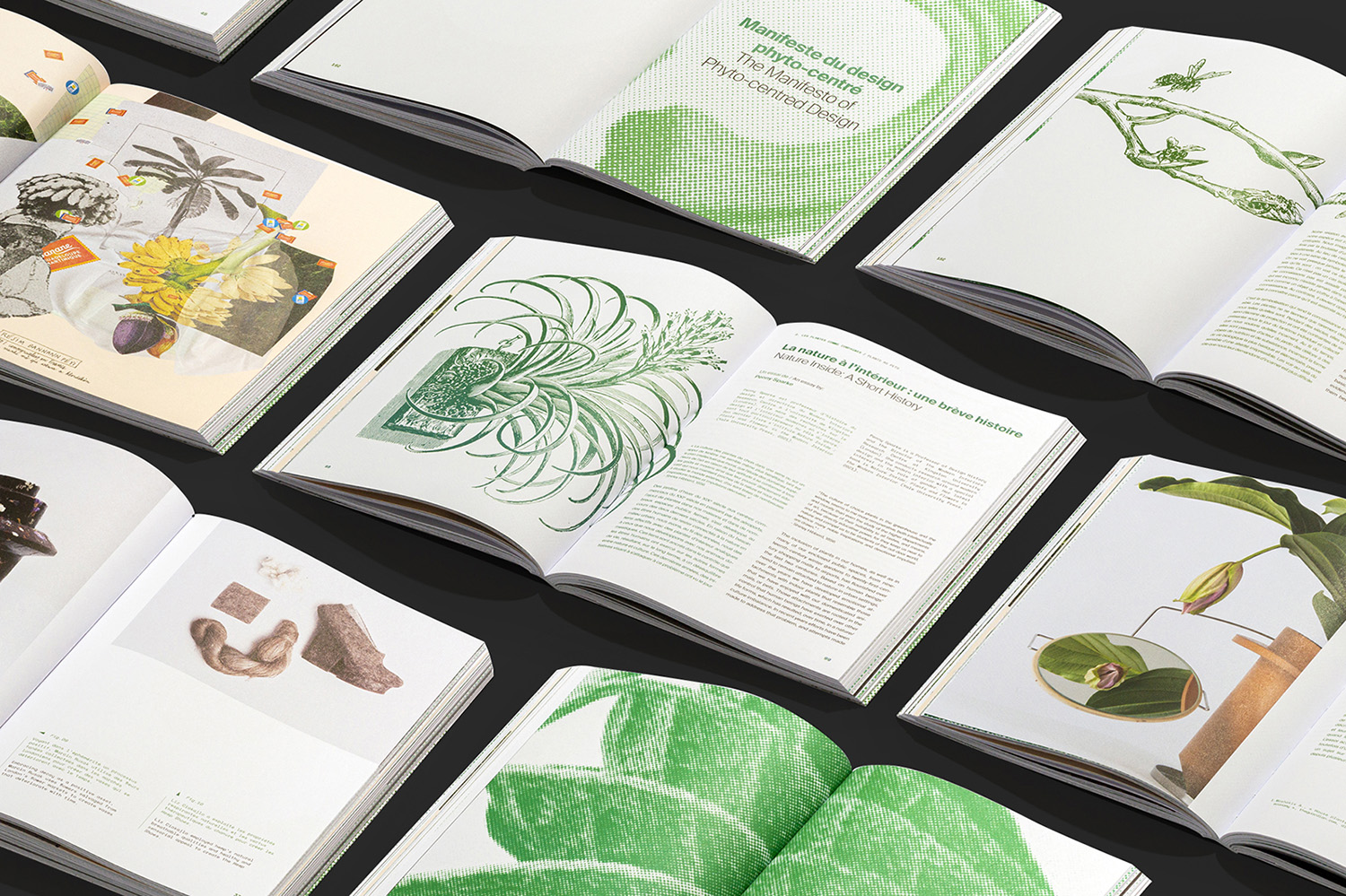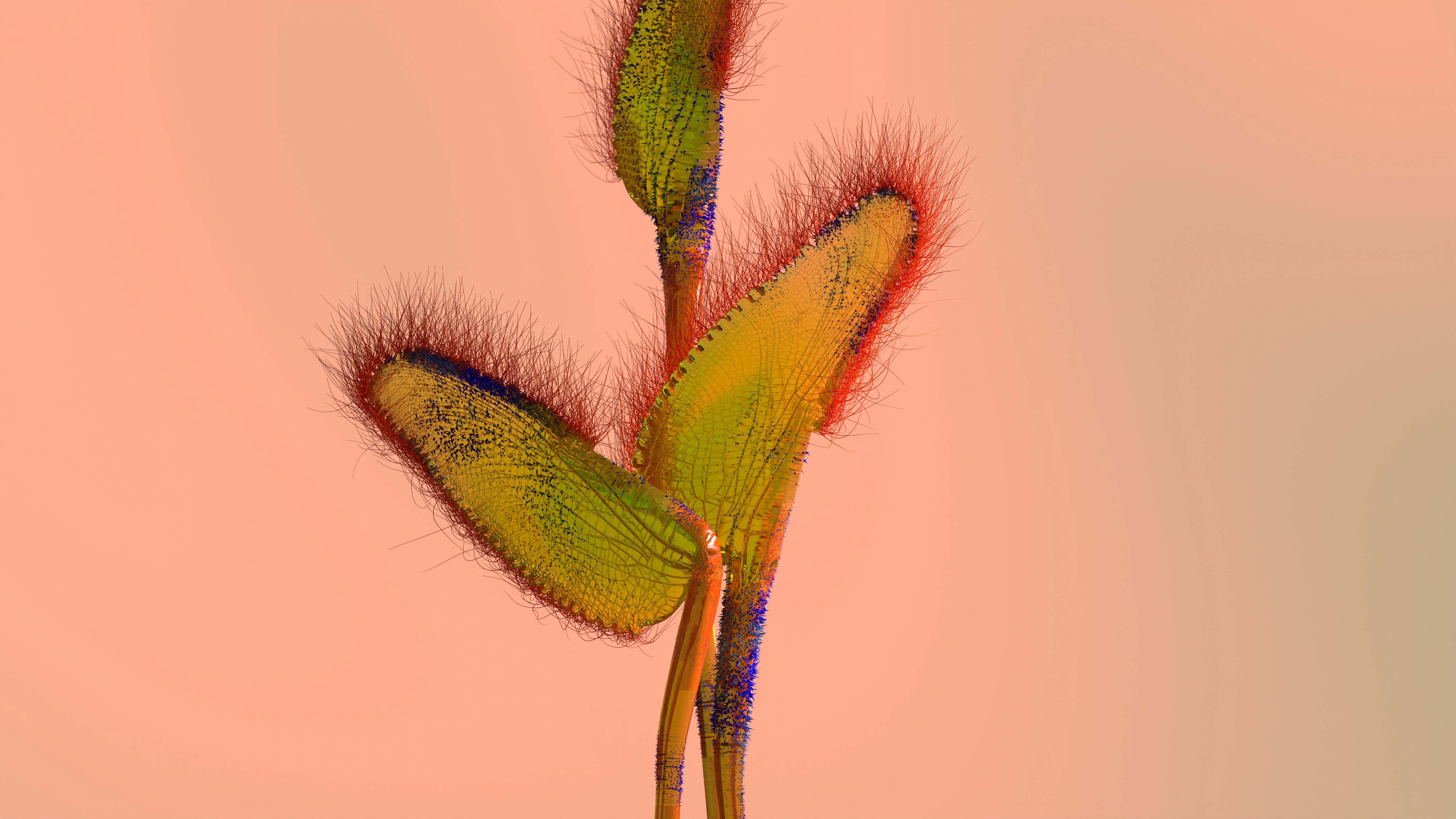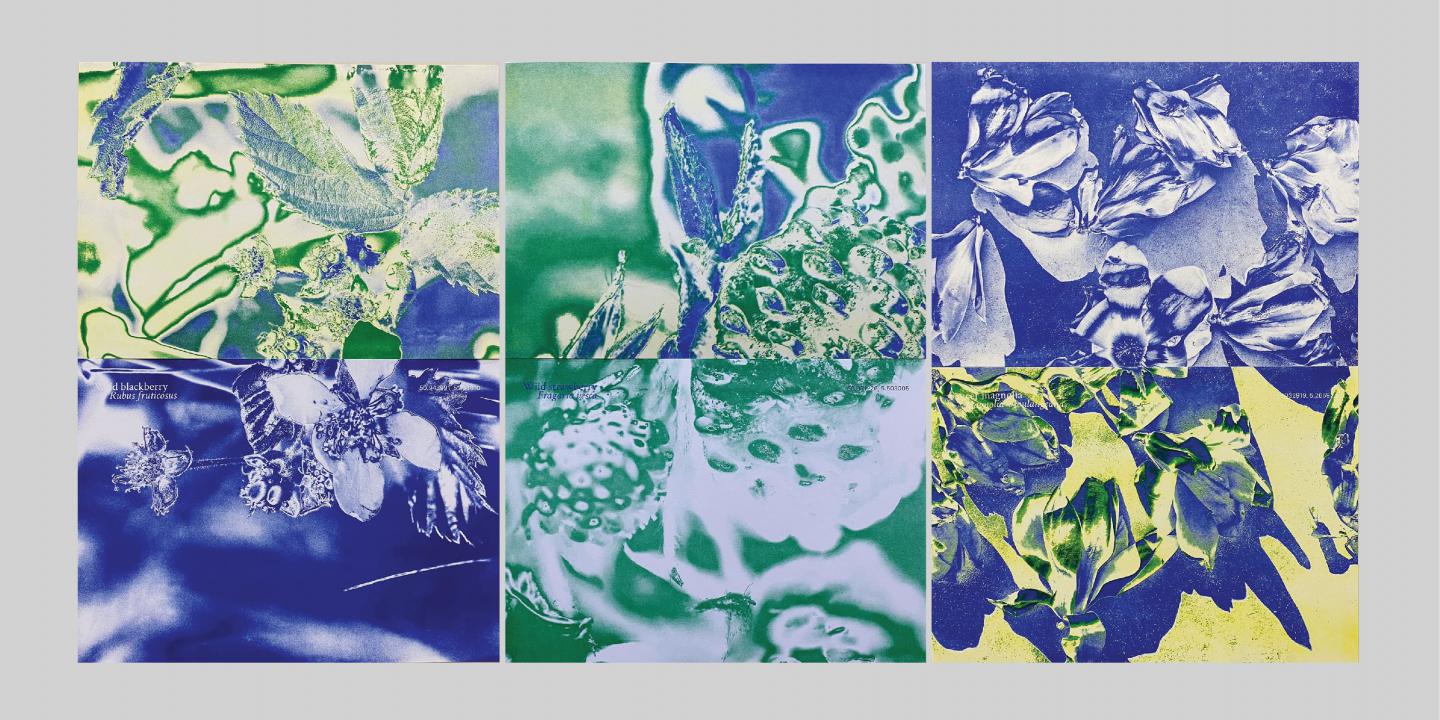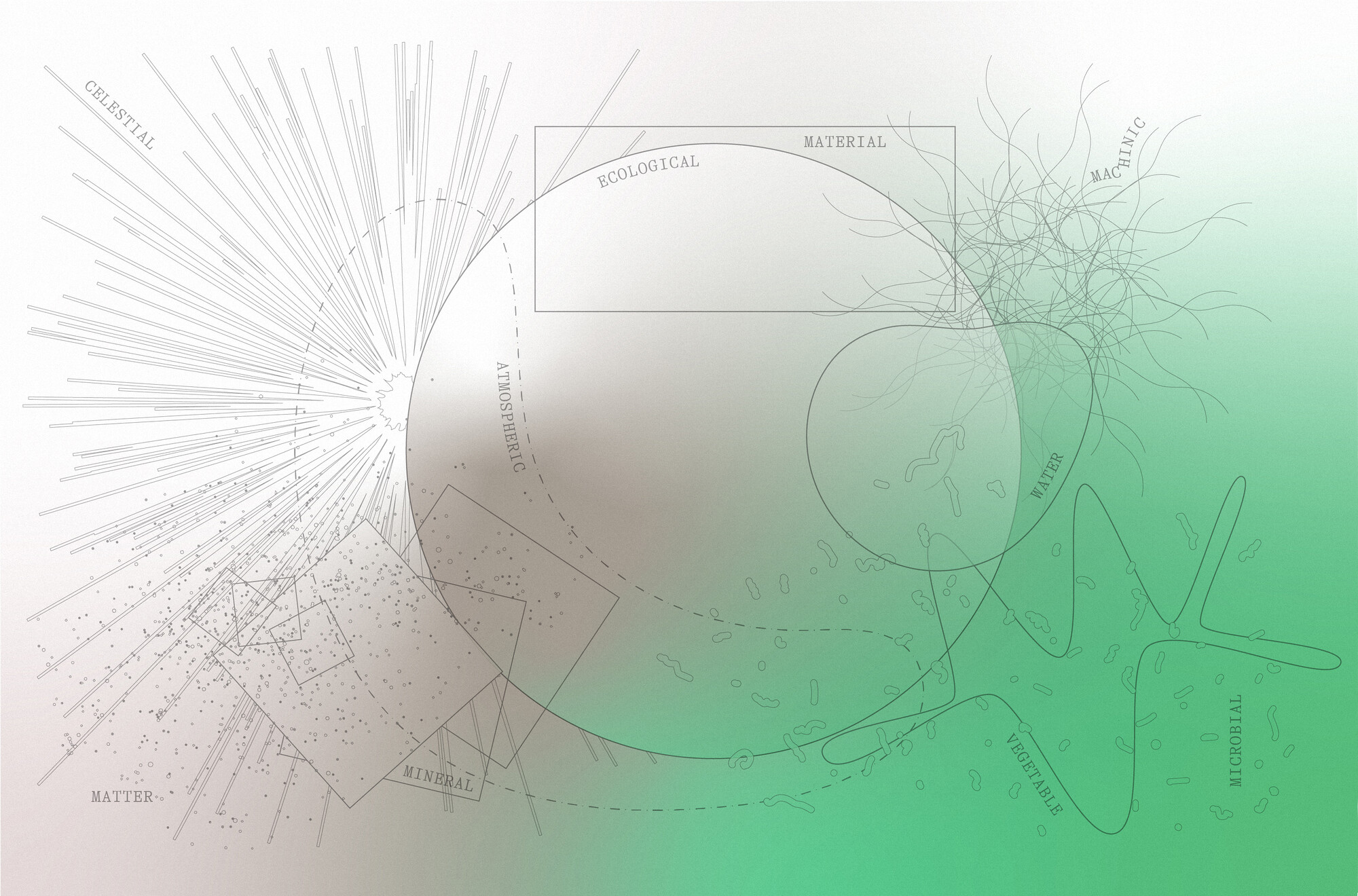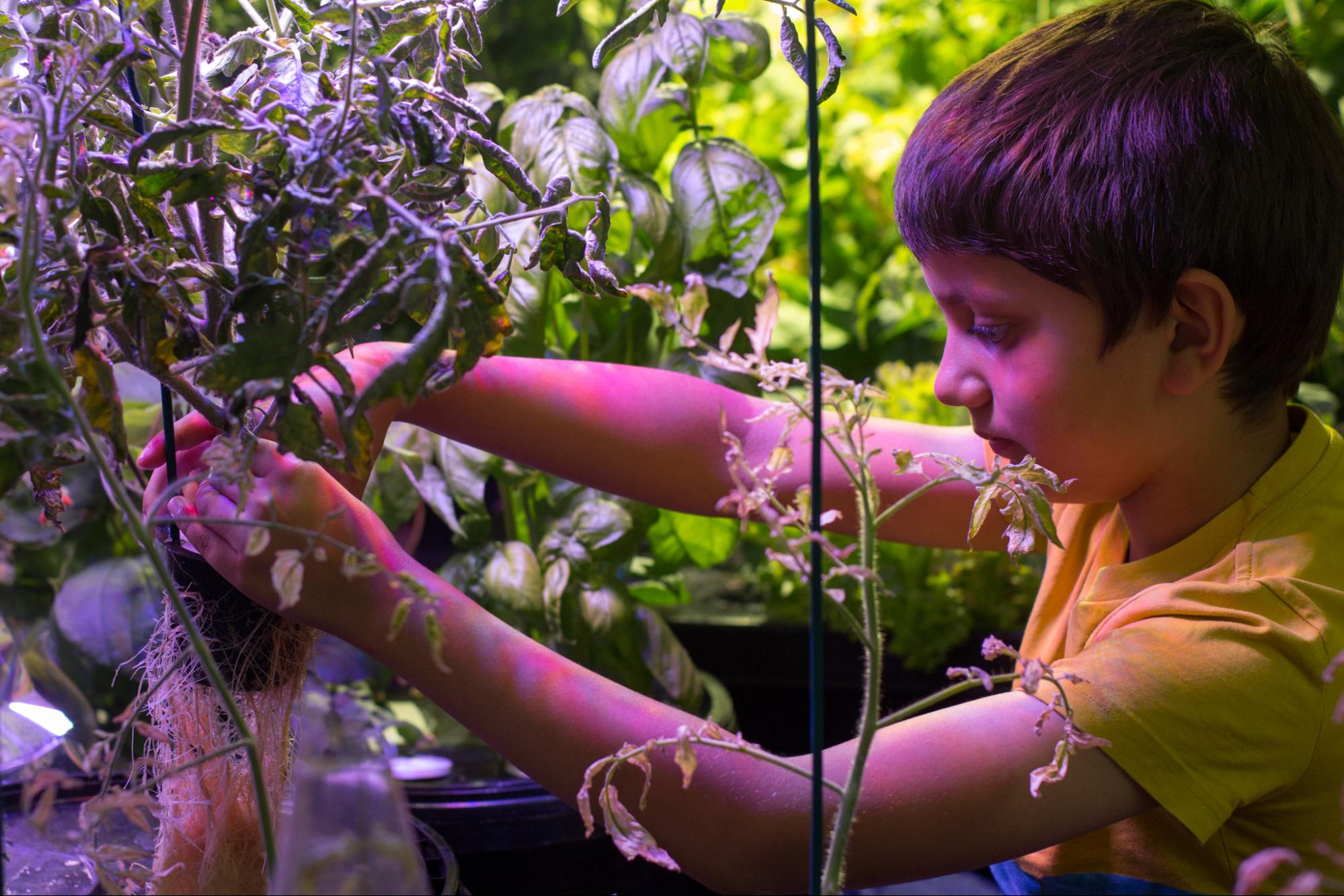This story is a part of MOLD’s reader-submitted project series. Submit your projects here for consideration.
The project was developed as studio z00’s contribution to the Future Food Deal at Tallinn Architecture Biennale 2022: Edible; Or, The Architecture of Metabolism.
Words and Images by Studio z00.
PROJECT OVERVIEW
There is nothing like eating a fruit when it is just ripe. Banana Gas Machine explores the idea of an alternative ripening process to reimagine the system of preparing fruit for consumption. To meet the expectations of our ready-to-eat culture, a global industry of ripening facilities ensures that we find perfectly ripe fruit 365 days a year at the grocery store – a process distant and almost invisible. Banana Gas Machine investigates the possibility of a ripening machine, just as the juicer at the local grocery store, that follows the principles of interrelations, dependency and proximity of produce to its consumer.
PROBLEM
The plant ripening hormone Ethylene is naturally produced during the ripening process of a fruit, turning starch into sugar. However, to extend the time for them to be transported, fruits such as bananas, mangoes or pears are harvested before the natural ripening process has even started. On the long way to its consumer, they have to stop at various locations including suburban ripening chambers that then use chemically produced ethylene gas to finally turn green bananas into the yellow fruit we know.
DESIGN PROCESS
The design process can be read as a recipe:
1. BUILD STRUCTURE:
Find a spot in your local supermar- ket and place the base with its metal sculptures for the hanging fruit. When assembled, take each blob and flip it over the metal structure, affix at the bottom using moisture filters.
2. PLACE ETHYLENE EMITTERS:
There are individual chambers for different connections between the container and the ripening-blobs. This allows to connect the right fruit in the right ripening-state with its matching fruit-partner.
3. LET IT RIPE:
Start hanging unripe fruit on the metal sculptures in the blobs by using bags and hanging clips. Make sure to place them in the right section according to their ripening stadium.
4. TOUCH, SMELL, FEEL:
if the fruit is ripe. Use all your senses to analyze the readiness of the fruit.
5. THE DESSERT:
Greedily devour the mango when it has reached its perfect stage of sweetness. Feel your fingers being sticky from the sweetness of the juicy fruit. This is the dessert, the end of the process.
SHAPING FUTURE OF FOOD
Cultural expectations of the constant presence of perfectly ripe fruits in the grocery store lead to a large amount of food waste daily. By ripening right before eating, the physical and visual proximity of the Banana Gas Machine triggers a new connection of the fruit with its consumer. It challenges the capitalistic production of a fruit by proposing a new ritual of ripening, preparing and eating.
ABOUT THE PROJECT TEAM
Studio z00 is a research and architecture collective founded by Sophie Schaffer and Katharina Sauermann in 2020. Working at the intersection of space-making and culture, the studio specialises in the curation and production of architectural design, events, installations and scenography. The office’s recent projects critically examine contemporary social challenges by looking closer at speculative food futures and the role of digitalization within the domestic and public realm. Studio z00 has participated in multiple national and international Architecture Biennales, including those in Tallinn (2022), Venice (2021) – installation for The Open Workshop, and Vienna Design Week (2020&2021). The studio’s project Living in Isolation got exhibited at Atelier Kopfhoch (AT) in Vienna (2020) and the Utopiaa Festival: New Domestics in San Francisco (2020).
